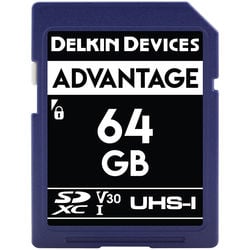If you’re a Fuji shooter you may have heard of this RAW converter called Iridient Developer. If you haven’t, it’s definitely something worth checking out.
I’ve been using Iridient for the last few months with my Fuji X100T and have been so blown away by the difference it makes when converting my Fuji RAW files, that I decided to do a detailed comparison between Iridient and Lightroom to show you just how much better it can be at processing Fuji X-Trans files.
And the results turned out a lot better than I was expecting.
Iridient vs Lightroom A Detailed Comparison
For this test I’m not going to compare features. When it comes to features Lightroom is still years ahead of Iridient. My goal here is to just focus on detail, color rendition and noise reduction.
And while Iridient is a little clunky and comes with almost no documentation, that’s ok, it’s not really designed to be a one-stop-shop photo editing program. The idea is to use it to convert your raw files into PSDs or TIFFs before editing them in a photo editing software like Lightroom or Photoshop.
What makes Iridient so good?
If you’re a Fuji X shooter, Iridient uses a unique algorithm designed specifically for the Fuji X-Trans sensor. Because of this, we see a lot more detail and color accuracy when processing our RAF files.
It’s also really nice at decoding standard Bayer sensors, which I cover a little at the end of this comparison.
Iridient vs Lightroom Baseline Comparison
With the baseline comparison I turned all the settings completely off. No sharpness, no noise reduction. Image was shot ISO 200, f5.6 on the Fuji X-T1 with the 56mm f1.2 lens.
This comparison shows the difference with color rendering and base sharpness.
Color Sample RAF File – Iridient

Color Sample RAF File – Lightroom

Baseline Sharpness Comparison Chart
With no settings Iridient is already significantly more crisp, with much more detail. And that’s looking at it with Internet Jpeg compression.
100% Crop.

Baseline Sharpness With Lightroom Contrast
By default Iridient is adding some extra contrast to the images. Extra contrast naturally will make some detail more apparent as well cause the colors to pop. So I did a test where I tried to match contrast to see if there was still a difference.
The Lightroom sample does actually look a little nicer, but the image still seems a bit more smeary.

Iridient vs Lightroom Sharpness Comparison
The sharpness comparison is tricky since the settings are not the same. Lightroom uses some form of Unsharp Mask while Iridient has six different sharpening options all with varying results. To simplify things I’ve chosen Iridient Reveal since it is the default.
My goal with this test was to push the sharpness as far as I could while creating minimal artifacts. (Or those little squigglies that tend to appear.)
Sharpness Comparison Chart 01
We can see significantly sharper details, but also richer colors.
100% Crop

Sharpness Comparison Chart 02
We do get some strange color patterns on some of the color swatches. It only happens on Red, Magenta, 3/Color and Blue.
With Lightroom you can see some patterns on Black, Red, Magenta and Blue. But it is much less pronounced. My guess is this is a characteristic of the X-Trans pixel array and Iridient just accentuates it.
100% Crop.

Noise Reduction Test
For the noise reduction I shot three stops underexposed at ISO 3200, then push the exposure to correct.
With Iridient there are also a few different noise reduction techniques. I chose V3 since it is the default.
Noise Reduction Test Chart
The two different programs take a completely different approach to noise reduction.
It seems Lightroom sort of just blurs everything causing a loss in detail. Iridient is doing something else here. The noise is slightly more chunky with Iridient, but the detail and color is also very good.

Iridient vs Lightroom – Standard Bayer Sensor
Just out of curiosity I did a test with the standard Bayer sensor of the Sony A7r.
The difference of sharpness is marginal, but the Iridient sample seems to have this extra crispness that’s slightly more pleasant.

Iridient vs Lightroom Conclusions
I was actually waiting for the new version of Lightroom to come out before doing this test but all signs of it just seemed to vanish from existence. Hopefully there are some improvements to Lightroom’s RAW converter since it is falling behind, but I guess we would have seen that with the latest Adobe Camera Raw update.
In this comparison we can see that Iridient brings our Fuji RAW files into a whole new class of image quality. The resolution and detail you’re able to obtain is definitely worth the hassle of adding an extra step to your workflow.
If you’re a serious Fuji X shooter then I wouldn’t pass this one up. And if you’re a JPEG only shooter, this is a good reason to maybe consider shooting RAW on some of your more important photos.
| **This website contains affiliate links. We will earn a small commission on purchases made through these links. Some of the links used in these articles will direct you to Amazon. As an Amazon Associate, I earn from qualifying purchases. |

